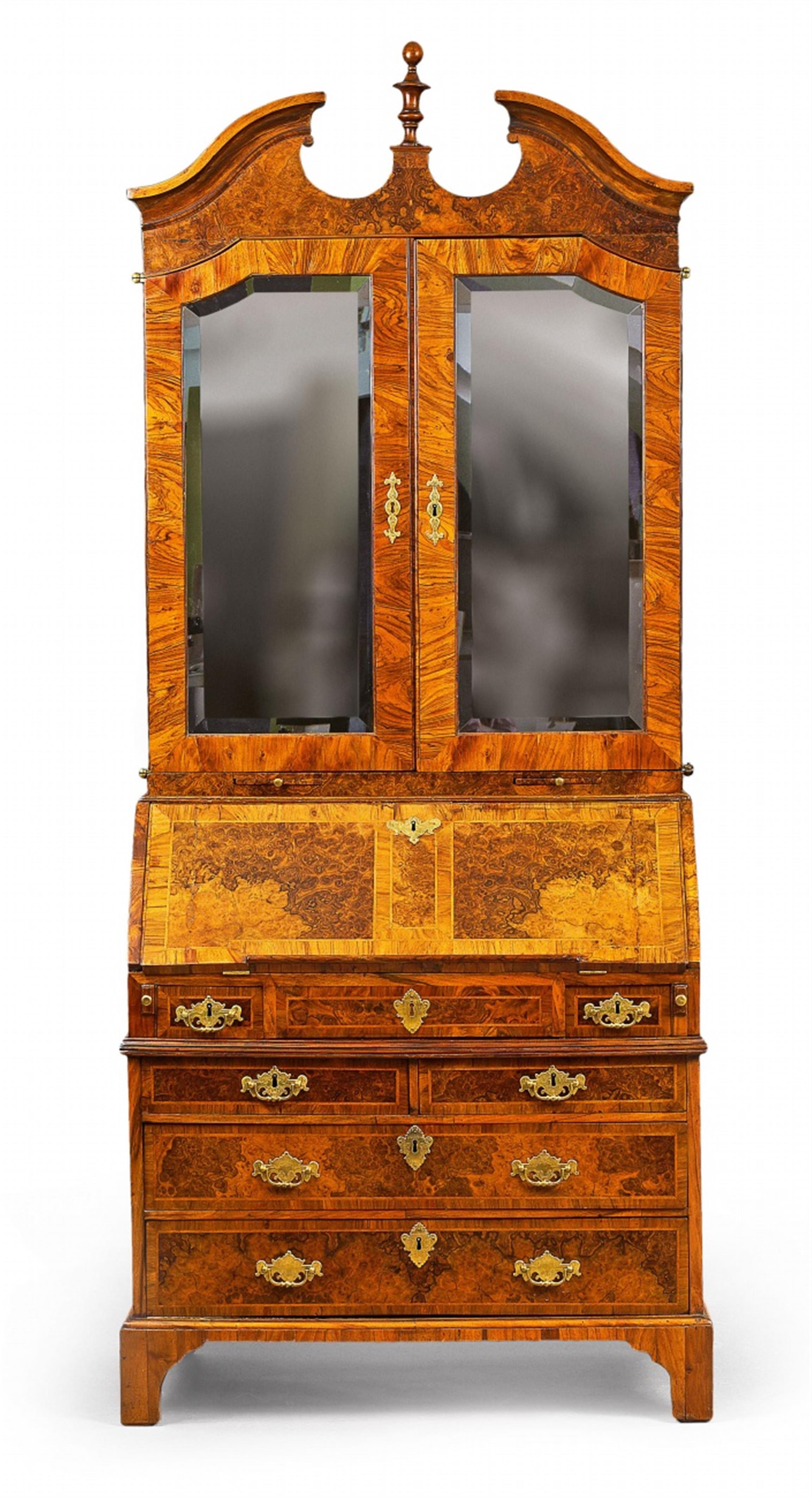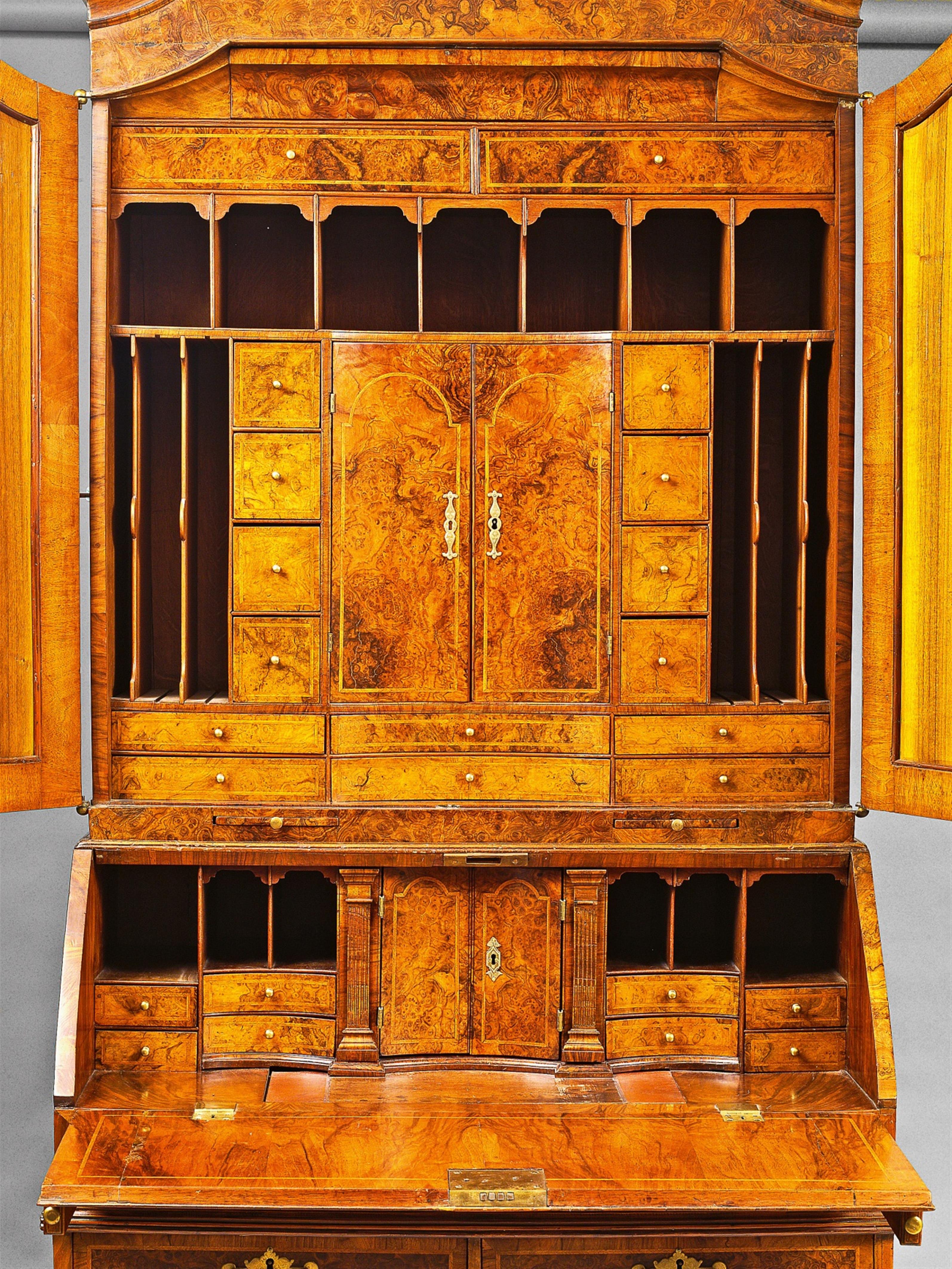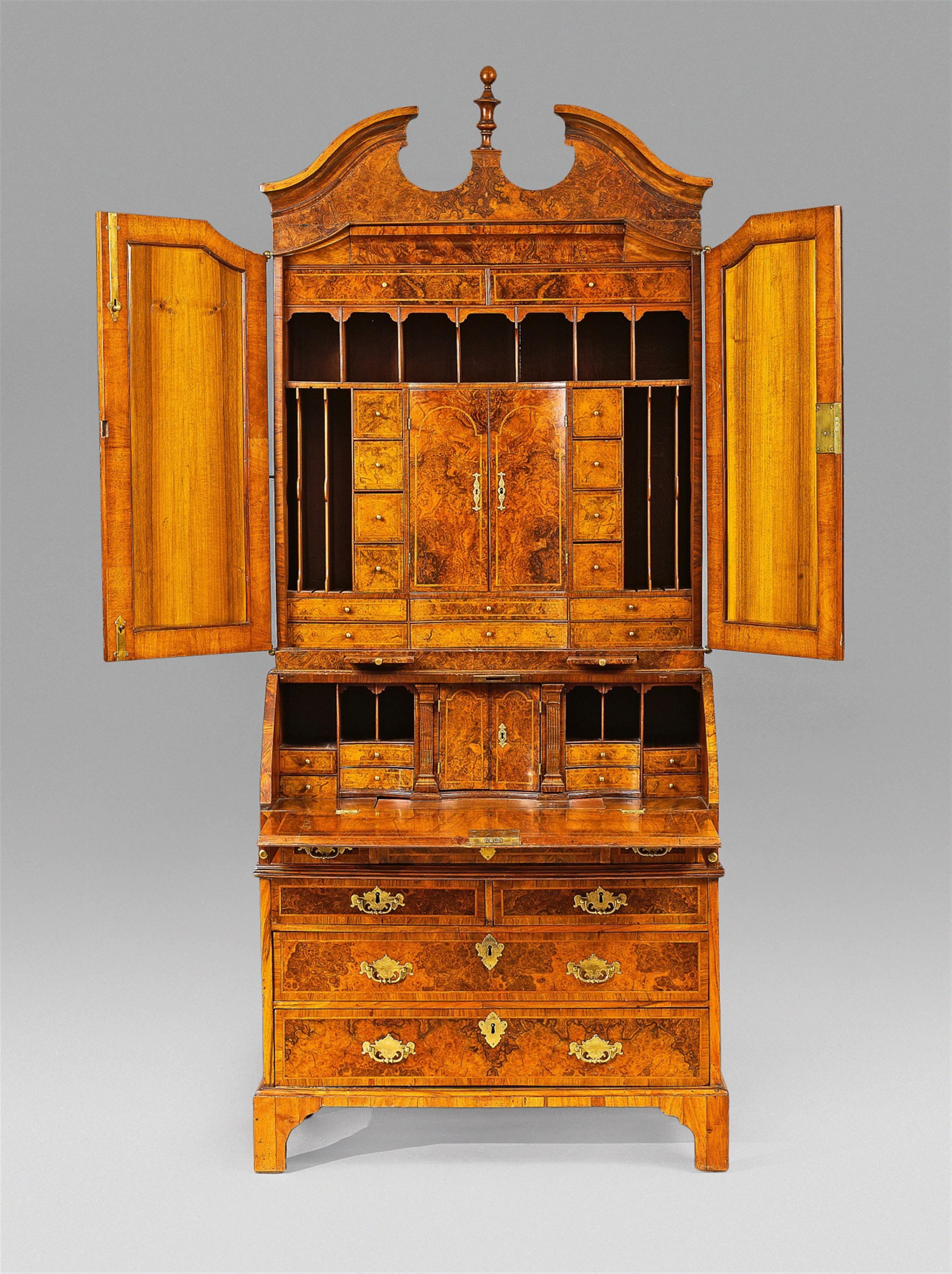A Dresden inlaid writing cabinet
With palisander, walnut, elm, and boxwood inlays, replaced mirror, leather writing surface and gilt brass mountings. An angular piece based on English designs, comprising a lower section with four drawers, a slanted fall above three drawers, and a two-doored mirrored upper section surmounted by a serpentine pediment. The fall and doors concealing numerous drawers, shelves, secret compartments, and two surfaces for candle holders. Older restorations over shrinkage cracks. H 248, W 100, D 60 cm.
Ca. 1730 - 40.
The design of the present work corresponds to a type of writing cabinet that emerged in England during the reign of William and Mary in the late 17th century and was developed further into the 18th century under Queen Anne. The design reached Saxony via Holland and Brandenburg, where it became popular. The Dresden cabinetmaker's guild required such a piece to be produced for the attainment of a master craftsman's title until 1733. The works are characterised by their simple, practical form and the use of finely grained veneers. Later examples occasionally acquired breakfront pediments or curved mouldings, but still maintained their original restrained quality.
The pieces were often fitted with equally simple mountings, generally consisting only of finely chased handles. Their forms were adapted throughout the 18th century to suit the more exuberant Rococo taste, but they were always kept to a modest scale, never crowding the veneered surface.
As is common for Germany as a whole, little is known for sure about the cabinetmakers working in Dresden and for the court of Saxony. Therefore, it is hard to ascertain whether this piece was made for the court, the local aristocracy, or perhaps a wealthy member of the upper middle classes.
With a certificate by Dr. Gisela Haase, dating 16th January 2016.
Provenance
Wesendonck Collection, Zurich.
Subsequently in family ownership.
Literature
Cf. Haase, Dresdner Möbel des 18. Jahrhunderts, Leipzig, 1993, cat. no. 74, 76 and 79.






